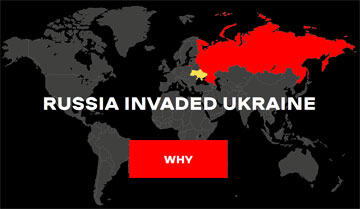Multiple vulnerabilities in Microsoft Windows IP Routing Management Snapin
| Risk | High |
| Patch available | YES |
| Number of vulnerabilities | 3 |
| CVE-ID | CVE-2024-38115 CVE-2024-38114 CVE-2024-38116 |
| CWE-ID | CWE-122 |
| Exploitation vector | Network |
| Public exploit | N/A |
| Vulnerable software |
Windows Operating systems & Components / Operating system Windows Server Operating systems & Components / Operating system |
| Vendor | Microsoft |
Security Bulletin
This security bulletin contains information about 3 vulnerabilities.
1) Heap-based buffer overflow
EUVDB-ID: #VU95925
Risk: High
CVSSv4.0: 6.1 [CVSS:4.0/AV:N/AC:L/AT:N/PR:N/UI:A/VC:H/VI:H/VA:H/SC:N/SI:N/SA:N/E:U/U:Amber]
CVE-ID: CVE-2024-38115
CWE-ID:
CWE-122 - Heap-based Buffer Overflow
Exploit availability: No
DescriptionThe vulnerability allows a remote attacker to execute arbitrary code on the target system.
The vulnerability exists due to a boundary error in Windows IP Routing Management Snapin. A remote attacker can pass specially crafted data to the application, trigger a heap-based buffer overflow and execute arbitrary code on the target system.
Successful exploitation of this vulnerability may result in complete compromise of vulnerable system.
MitigationInstall updates from vendor's website.
Vulnerable software versionsWindows: before 10 21H2 10.0.19044.4780, 10 22H2 10.0.19045.4529, 10 22H2 10.0.19045.4780, 10 1507 10.0.10240.20751, 10 1607 10.0.14393.7259, 10 1809 10.0.17763.6189, 11 21H2 10.0.22000.3147, 11 22H2 10.0.22621.4037, 11 23H2 10.0.22631.4037
Windows Server: before 2008 R2 6.1.7601.27277, 2008 6.0.6003.22825, 2012 R2 6.3.9600.22134, 2012 6.2.9200.25031, 2016 10.0.14393.7259, 2022 10.0.20348.2655
CPE2.3 External linkshttps://msrc.microsoft.com/update-guide/vulnerability/CVE-2024-38115
Q & A
Can this vulnerability be exploited remotely?
Yes. This vulnerability can be exploited by a remote non-authenticated attacker via the Internet.
Is there known malware, which exploits this vulnerability?
No. We are not aware of malware exploiting this vulnerability.
2) Heap-based buffer overflow
EUVDB-ID: #VU95928
Risk: High
CVSSv4.0: 6.1 [CVSS:4.0/AV:N/AC:L/AT:N/PR:N/UI:A/VC:H/VI:H/VA:H/SC:N/SI:N/SA:N/E:U/U:Amber]
CVE-ID: CVE-2024-38114
CWE-ID:
CWE-122 - Heap-based Buffer Overflow
Exploit availability: No
DescriptionThe vulnerability allows a remote attacker to execute arbitrary code on the target system.
The vulnerability exists due to a boundary error in Windows IP Routing Management Snapin. A remote attacker can pass specially crafted data to the application, trigger a heap-based buffer overflow and execute arbitrary code on the target system.
Successful exploitation of this vulnerability may result in complete compromise of vulnerable system.
MitigationInstall updates from vendor's website.
Vulnerable software versionsWindows: before 10 21H2 10.0.19044.4780, 10 22H2 10.0.19045.4529, 10 22H2 10.0.19045.4780, 10 1507 10.0.10240.20751, 10 1607 10.0.14393.7259, 10 1809 10.0.17763.6189, 11 21H2 10.0.22000.3147, 11 22H2 10.0.22621.4037, 11 23H2 10.0.22631.4037
Windows Server: before 2008 R2 6.1.7601.27277, 2008 6.0.6003.22825, 2012 R2 6.3.9600.22134, 2012 6.2.9200.25031, 2016 10.0.14393.7259, 2022 10.0.20348.2655
CPE2.3 External linkshttps://msrc.microsoft.com/update-guide/vulnerability/CVE-2024-38114
Q & A
Can this vulnerability be exploited remotely?
Yes. This vulnerability can be exploited by a remote non-authenticated attacker via the Internet.
Is there known malware, which exploits this vulnerability?
No. We are not aware of malware exploiting this vulnerability.
3) Heap-based buffer overflow
EUVDB-ID: #VU95926
Risk: High
CVSSv4.0: 6.1 [CVSS:4.0/AV:N/AC:L/AT:N/PR:N/UI:A/VC:H/VI:H/VA:H/SC:N/SI:N/SA:N/E:U/U:Amber]
CVE-ID: CVE-2024-38116
CWE-ID:
CWE-122 - Heap-based Buffer Overflow
Exploit availability: No
DescriptionThe vulnerability allows a remote attacker to execute arbitrary code on the target system.
The vulnerability exists due to a boundary error in Windows IP Routing Management Snapin. A remote attacker can pass specially crafted data to the application, trigger a heap-based buffer overflow and execute arbitrary code on the target system.
Successful exploitation of this vulnerability may result in complete compromise of vulnerable system.
MitigationInstall updates from vendor's website.
Vulnerable software versionsWindows: before 10 21H2 10.0.19044.4780, 10 22H2 10.0.19045.4529, 10 22H2 10.0.19045.4780, 10 1507 10.0.10240.20751, 10 1607 10.0.14393.7259, 10 1809 10.0.17763.6189, 11 21H2 10.0.22000.3147, 11 22H2 10.0.22621.4037, 11 23H2 10.0.22631.4037
Windows Server: before 2008 R2 6.1.7601.27277, 2008 6.0.6003.22825, 2012 R2 6.3.9600.22134, 2012 6.2.9200.25031, 2016 10.0.14393.7259, 2022 10.0.20348.2655
CPE2.3 External linkshttps://msrc.microsoft.com/update-guide/vulnerability/CVE-2024-38116
Q & A
Can this vulnerability be exploited remotely?
Yes. This vulnerability can be exploited by a remote non-authenticated attacker via the Internet.
Is there known malware, which exploits this vulnerability?
No. We are not aware of malware exploiting this vulnerability.
